
The Right Honourable Mary Simon aims to be an Arctic fox
Canada’s first-ever Indigenous governor general doesn’t play favourites among our majestic natural wonders, but she...
In early July, Tahltan Central Government President Chad Norman Day boarded a helicopter in Dease Lake, flying to a nearby cluster of rogue mining claims exploiting one of the world’s richest deposits of nephrite jade.
“Jade mining has put a nasty facelift on the land,” says Day of what they saw on the flight.
“They’ve built roads and ripped up a lot of land and forest.”
Jade miners have also built camps with outhouses and garbage dumps, he says, and the Tahltan suspect the waste is being buried instead of hauled out.
It’s becoming a cliché to say that British Columbia is a “wild west” for mining, but when it comes to nephrite jade, the official provincial gemstone, it’s no exaggeration.
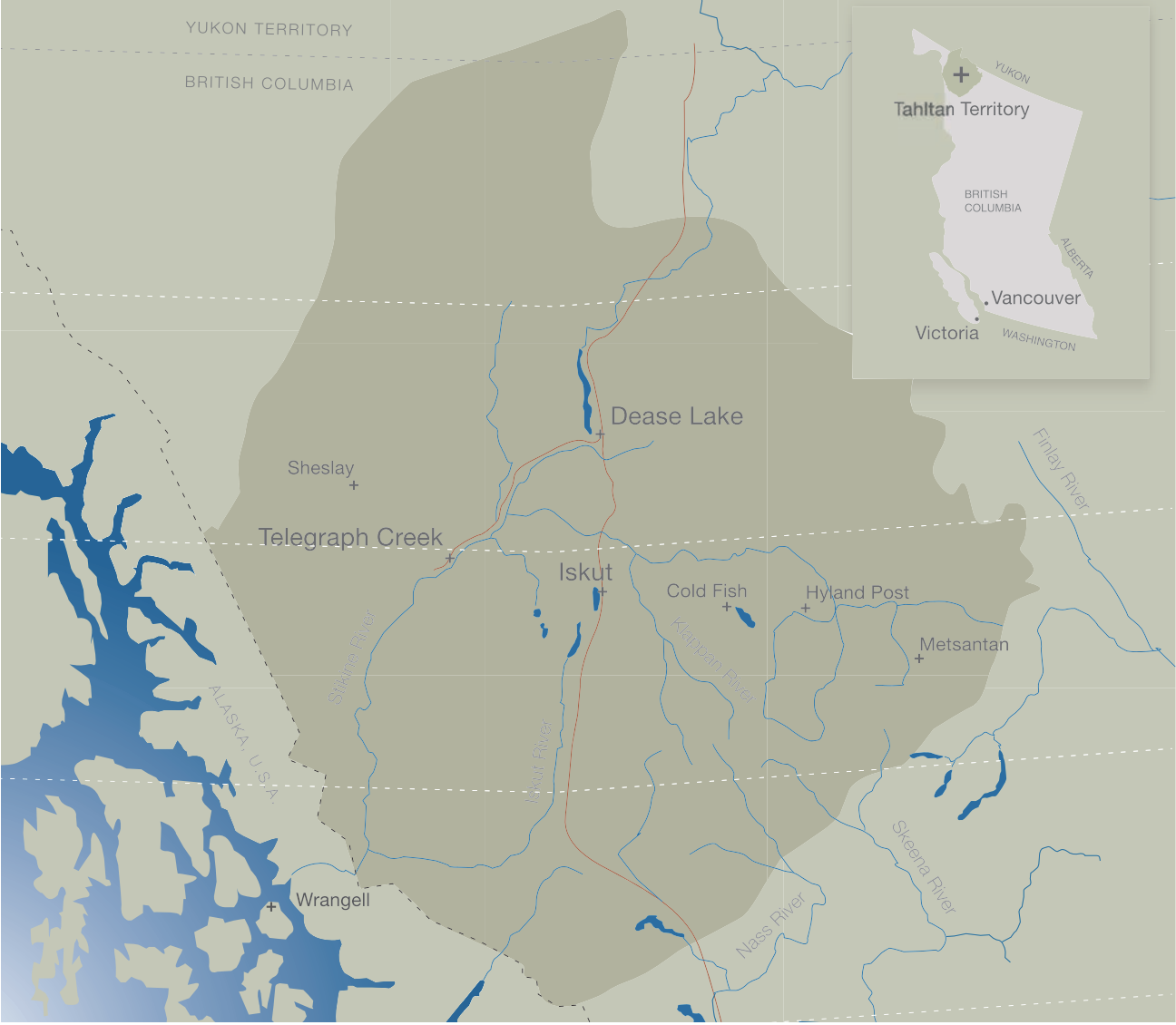
Location of Tahltan traditional territory in northeast B.C. Map: Tahltan Central Government
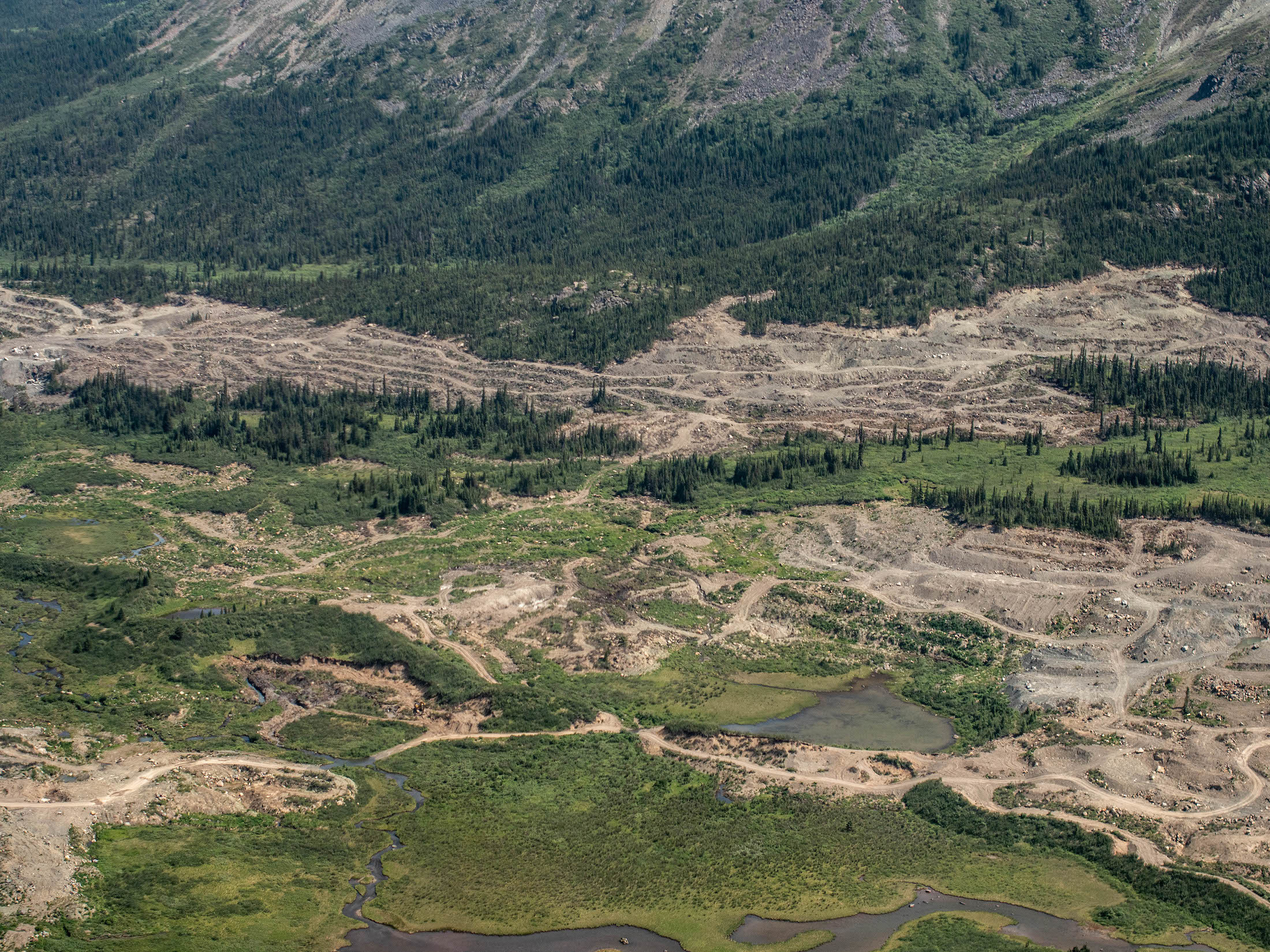
Jade placer mining operations occur without an environmental assessment. Photo: Tahltan Central Government
Out on this remote landscape 1,750 kilometres north of Vancouver, critics say there is no active enforcement to speak of, no meaningful requirement for reclamation, and no necessity to consult and seek permission from the Tahltan Nation to work on the land.
Back in June, Day sent a letter demanding the province take immediate steps to shut down the jade and gold placer mining (mining surface areas near streams and digging in old riverbeds) across the Tahltan Nation’s nearly 100,000 square kilometres of territory.
Weeks later, Day showed up in person with a film crew to document his eviction of the biggest players, putting them on notice that the party was over.
The term “jade” refers to two different kinds of ornamental rocks — jadeite and nephrite, which have been revered in China since the Stone Age. Today British Columbia is the world’s largest producer of nephrite jade, with deposits documented in more than 50 sites — but nowhere is it more plentiful than in the northwest corner of B.C., including east of the Stewart Cassiar Highway near Dease lake.
Jade is an unusual mining commodity, says Glenn Grande of the Fair Mining Collaborative: some miners finding it by placer mining, while others mine it from hard rock like other minerals. There’s an opportunistic element to it as well — sometimes big jade boulders are found randomly by miners looking for other things, like gold.
“It can be a deliberate seek or an accidental find,” Grande says.
In recent years especially, there is a big cash incentive to look for jade.

Jade scattered on the ground near a placer mining operation. Photo: Tahltan Central Government

Jade claims near Dease Lake, B.C. Because of B.C.’s antiquated mining laws, anyone can stake a mining claim online, even in Indigenous territory.
According to a report from Visual Capitalist, the average AAA B.C. jade price jumped from less than $200 per kilogram in 2004, to around $1,400 per kilogram in 2016. During that same period, average yearly B.C. jade sales grew from fewer than 400 tonnes per year to about 1,000 tonnes per year.
Talk of this lucrative trade is a sore point for Day.
“In terms of Tahltan Nation benefits, revenue sharing, anything like that, benefits that would flow to the nation as a collective and in a significant way, there’s nothing.”
Day points to the “impact benefit agreements” the Tahltan has with other industries — including mining exploration, guide outfitting, logging and clean energy — and says the jade industry will need to follow these examples.
“We’re very experienced in terms of drawing up agreements to make sure that the Tahltan are intimately involved, in processes, especially around permitting and the environment, and that our people and our communities are receiving benefits and opportunities,” he said. “None of these things are currently [in place] with the jade industry at all.”
Placer mining in particular is a bust for the province too: according to research by the Fair Mining Collaborative, B.C. collected less than $79,000 in royalties from 558 permitted placer mines in 2017. That same year, placer gold sales alone were estimated at almost $16 million.
Excitement about Dease Lake-area riches has been fanned by the Discovery Channel reality show Jade Fever, which follows a group of financially stressed jade miners, working on and off for Chinese backers, as they do battle with the rough, mountainous topography of jade country.
Like other mining reality shows in recent years — there are at least 13, most dedicated to placer gold mining —
Jade Fever is a clarion call to every weekend warrior with access to heavy machinery and dreams of making easy money plucking “million dollar” jade boulders from streambanks and out of mountainsides.
“This isn’t mining,” says one of the hapless miners on Jade Fever. “It’s treasure hunting.”
The drama doesn’t always stop when the camera cuts. In October 2017, CBC reported that Ken Foy, the star of the History Channel’s Yukon Gold was fined $145,000 for the environmental damage inflicted on his placer claim near Dawson City. The actual taxpayer cost was reportedly closer to $1 million.
If Jade Fever is any indication, you find jade not with geological knowledge, but with “your gut” — and by driving lots of heavy equipment through watercourses, drilling speculative holes, and digging big pits in the ground.
The conflict over jade in northwest B.C. is the result of two clashing legal systems.
According to B.C. law, the gold rush that started in 1859 never ended; in many cases, mining remains the highest use of Crown land.
The current system of free-entry not only allows you to stake claims online without physically touching the land, but once you’ve done so, your rights to access the subsurface trump most other land rights.
Jade miners have staked claims and applied for permits that give them the right, under provincial law, to be on the land exploring and mining for jade.

Jade placer mining operations on unceded territory of the Tahltan nation. Photo: Tahltan Central Government
But many of these same miners are coming on to unceded Tahltan Nation territory, without any contact or consultation with the First Nation, creating significant land disturbances and environmental harm as they go.
Although B.C. recently proposed some mining reforms, they only apply to the Mines Act and not the Mineral Tenure Act which undergirds the free-entry system.
That’s why, when Day was flying around in a helicopter, he was evicting jade miners that have every right to be there under provincial law.
“The online staking regime, it’s definitely illegal under Tahltan law,” says Day. “I’m sure if we took this thing to court at the highest level, the Supreme Court of Canada would likely agree.”

President of the Tahltan Central Government, Chad Day, speaks with a placer miner during the process of handing out eviction notices. Photo: Tahltan Central Government
There is real hope that B.C. mining laws will be reformed in the near future, thanks to the NDP government’s unveiling of new legislation to implement the UN Declaration on the Rights of Indigenous People (UNDRIP).
Under article 32 the declaration grants Indigenous peoples “the right to determine and develop priorities and strategies for the development or use of their lands or territories and other resources.”
It also requires governments to “consult and cooperate in good faith” with Indigenous peoples through their own representative institutions.
When it comes to resource development like mines, UNDRIP mandates governments obtain free and informed consent of Indigenous peoples prior to the approval of “any project affecting their lands or territories and other resources, particularly in connection with the development, utilization or exploitation of mineral, water or other resources.”

Placer mining in some areas takes place along watercourses but has not been subject to an environmental assessment. Photo: Tahltan Central Government

Members of the Tahltan survey placer mining operations from the air. Photo: Tahltan Central Government
B.C.’s proposed legislation, introduced through Bill 41 in late October, would require the province to work in tandem with Indigenous legal systems.
But just what the integration of colonial and Indigenous law will look like on the ground and in places like Tahltan traditional territory remains unclear, although some have indicated it could be transformative when it comes to long-promised nation-to-nation decision-making.
It is written into the mandate letter of Michelle Mungall, Minister of Energy, Mines and Petroleum Resources that her ministry participate in bringing “the principles of the [U.N.] declaration into action.”
Terry Teegee, regional chief of the B.C. Assembly of First Nations, said the new legislation is likely to bring more certainty to mining operations because it will more clearly establish what is required for gaining Indigenous consent.
“Consent is about agreement. It is a process to achieving and maintaining agreement … about respecting our laws as equals and as partners,” Teegee said at the B.C. legislature, during Bill 41’s unveiling.
“One of the greatest uncertainties for project development in B.C. is not knowing if a project has the consent of affected First Nations,” he said. “Laws that are co-developed … will deliver economic, legal certainty and predictability in this province.”
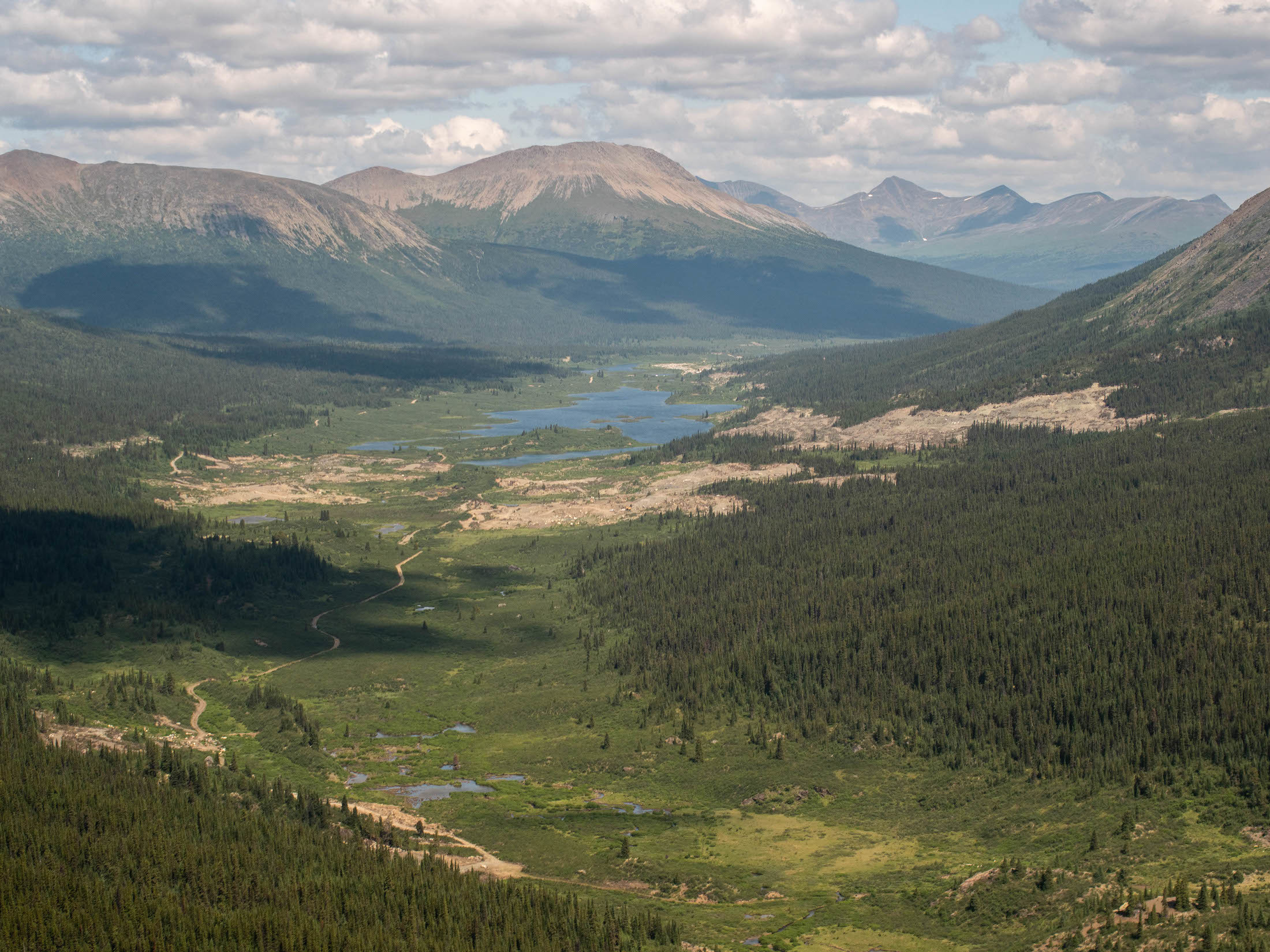
Placer mining operations in a valley. Photo: Tahltan Central Government
“The courts have been clear that Indigenous peoples have rights in their territories and the legislation will help provide a plan and a path forward for all of us,” Sarah Plank, a spokesperson for the Ministry of Indigenous Relations and Reconciliation, told The Narwhal.
In mid-September, Day attended meetings with the ministry to talk about what the implementation of UNDRIP will look like for the Tahltan.
“I think [UNDRIP] will definitely play a role in how to address these issues with jade mining,” says Day. “It’s a hopeful step, but the devil’s in the details.”
Day says another part of the solution is to complete Tahltan land use planning — already under way for several years, buoyed by new funding, which will ultimately dictate where resource development happens in Tahltan territory.
“The big change that needs to take place is that Tahltan land use planning needs to take place ahead of time, to ensure that no outside interests can stake land that [we] have said is off limits.”
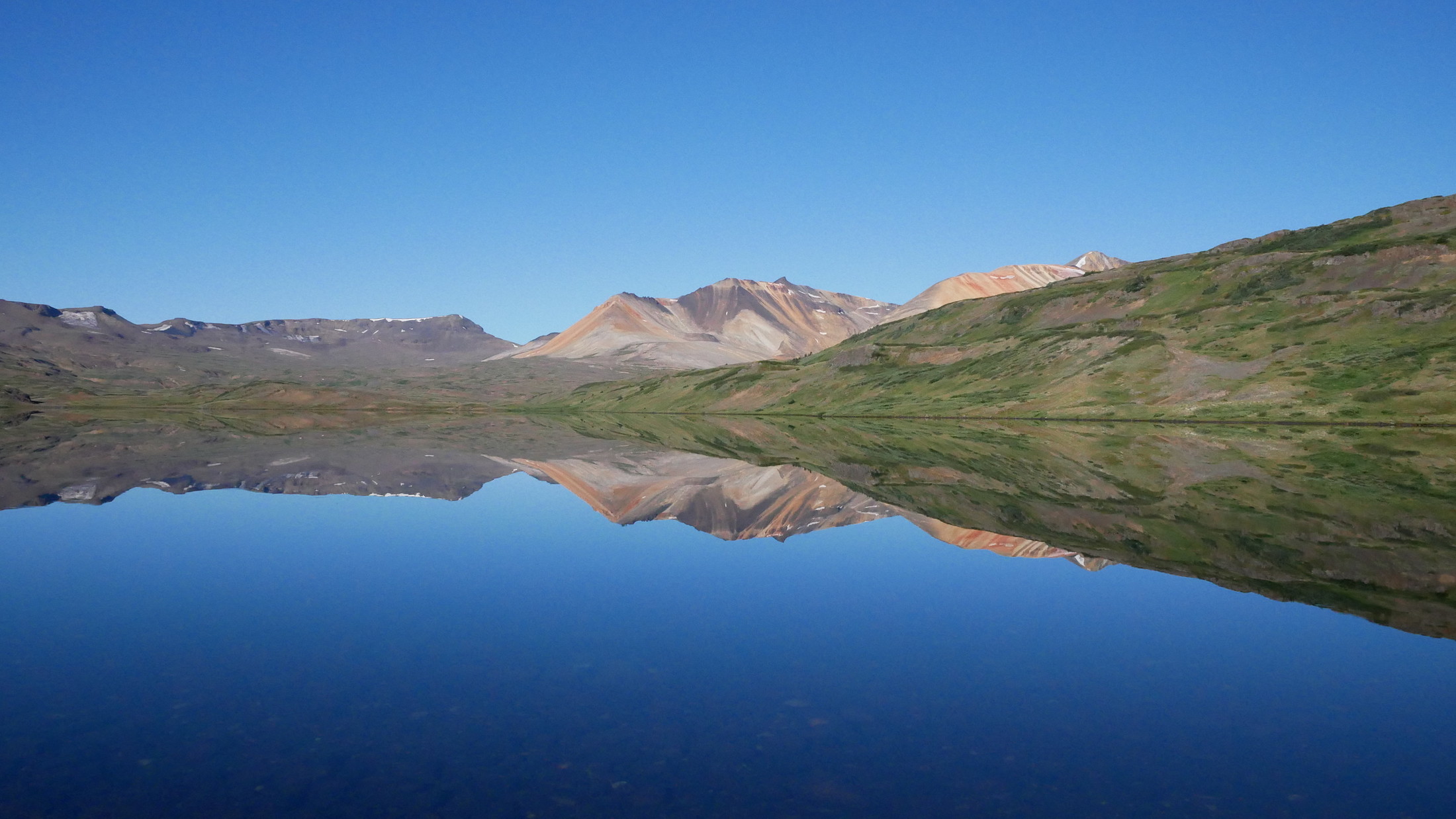
Mount Edziza Provincial Park in the territory of the Tahltan nation. Mining occurs on the outer boundaries of this park. Photo: Carol Linnitt / The Narwhal
Day points to the success of the Klappan Plan, unveiled by the province and Tahltan this past summer, which has created three separate land use zones across about 640,000 square hectares, including the subalpine basin known as the Sacred Headwaters.
In the recent past, this area has been a conflict flashpoint in conflict over coalbed methane extraction via fracking, coal mining, mineral exploration and moose poaching.
Future land use planning like in the Klappan, Day says, will not only determine where resource activities can happen, but will “ultimately bring more certainty to everybody, including industry.”
B.C. could solve a lot of problems by making mineral claims conditional, depending on what other activities and uses are competing for the same area, says Jessica Clogg, executive director and senior counsel at West Coast Environmental Law.
This would end the persistent idea, born in the 1860s gold rush era, that mining is always the highest and best use of B.C. land — and could spell the end to mining claims being staked in sensitive First Nations territory, important watersheds for drinking water and fisheries, and more.
“The idea that mineral claims are appropriate in any of these places is a bit crazy, really.”

Day walks around jade placer mining equipment while posting eviction notices at mining camps, some of which were empty. Photo: Tahltan Central Government
B.C. also needs to rethink the statutory right to compensation, introduced by the B.C. Liberals, which forces taxpayers to generously compensate miners if their claims to an area must be sidelined for things like park creation.
Clogg adds that updating B.C.’s mining laws will be a boon to industry.
“If we reform our mineral tenure system to be clearer about where mineral claims and mining activity is not appropriate, it will create greater certainty for industry, and avoid situations where millions and millions of dollars are expended, only to be mired in controversy and lawsuits.”
You only have to think of recent mining history for examples: the ongoing Taseko Mines debacle, the proposed Ajax mine near Kamloops city limits, and now, the rush for Dease Lake-area jade.
The province says it has already made changes to begin meeting UNDRIP — including committing $500 million over 10 years to support the construction of Indigenous family housing, and $50 million to revitalize languages.
In mid-September, they also proposed a plan to modernize the environmental assessment process, which could potentially affect placer mining.
The threshold that would trigger an environmental assessment for a placer mine has been lowered from 500,000 tonnes to 250,000 tonnes of annual “pay dirt.”
(Pay dirt is an old term for mined gravel that is processed in a sluice box, wash plant or other device for extracting precious metals.)
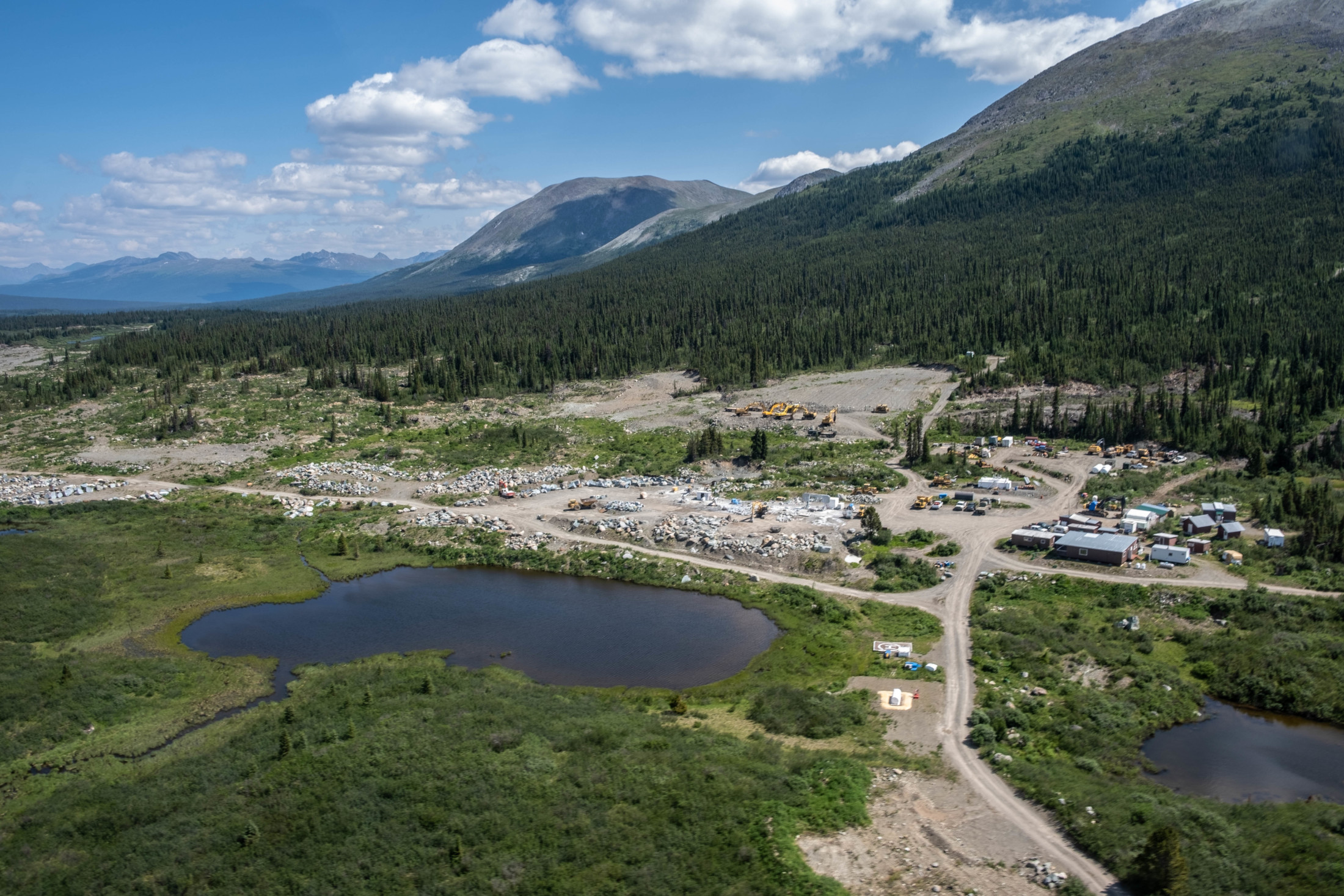
Jade placer mining operations. Photo: Tahltan Central Government
Perhaps the biggest problem is that the miners themselves, often working in very remote locations, would be expected to “self-report” when they reach the threshold to trigger an assessment which means a placer miner has to phone up the ministry and request an environmental assessment.
“Project proponents are responsible for making their own determination as to whether or not their proposed project falls within the thresholds set out in the Reviewable Projects Regulation,” wrote a spokesman from the B.C. Ministry of Climate Change and Environment. “[They] must identify themselves to the [Environmental Assessment Office] if they are reviewable.”
Back up near Dease Lake in July, Chad Norman Day is reading an eviction notice to Claudia Bunce and her husband Robin, the stars of the reality TV show Jade Fever, as the cameras roll.
It’s a strange moment: a film crew is already on the site filming the show, and the Tahltan have brought their own cameras to document the eviction process for their members.
“To be clear, your activities here are unlawful and deeply disrespectful to our Tahltan culture, people and ancestors who shed blood for these lands,” reads Day from the eviction notice he is delivering to Bunce.
“This letter is your final notice to shut down.”
Months have passed since the eviction notices were presented to the jade miners in Tahltan territory. In the interim at least two miners have indicated to the Tahltan that they have ceased operations and are exploring options for moving forward.
The Tahltan Central Government also confirmed they are now working with the province to chart a path forward.
The days of the roaring 1860s gold rush are long gone, and the Tahltan are determined to move British Columbia’s jade industry into the 21st century, one way or another.
Get the inside scoop on The Narwhal’s environment and climate reporting by signing up for our free newsletter. A $335 million funding commitment to fund...
Continue reading
Canada’s first-ever Indigenous governor general doesn’t play favourites among our majestic natural wonders, but she...

In Alberta, a massive open-pit coal mine near Jasper National Park is hoping to expand...

A trade war could help remake B.C.’s food system, but will family farmers be left...
